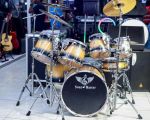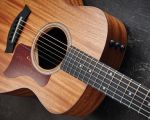How to Select a Drum Kit Based on Style
Choosing the right drum kit can be an overwhelming experience, especially when you’re a beginner or looking to upgrade your current setup. There are so many options out there, and each one caters to a different music style. As a drummer myself, I've learned that selecting a drum kit based on your musical style is crucial for getting the sound you want. Whether you’re into rock, jazz, metal, or electronic music, the right drum kit will make a significant difference in your performance and sound. Let me walk you through the different factors to consider when choosing a drum kit based on your style, and share some personal tips from my own experiences.
1. Understanding Your Musical Style
Before diving into drum kits, it’s important to first understand the musical style or genre you play. Each genre has different requirements when it comes to sound, tone, and feel. For example, if you’re into rock, you'll likely need a powerful, punchy sound, whereas if you’re playing jazz, you might want something more subtle with a lighter touch. I’ve spent years experimenting with different kits, and I can tell you that the sound of the drum kit plays a huge role in capturing the essence of your music style. Here's how the kit you choose will affect your sound:
2. Selecting a Drum Kit for Rock Music
When I first started playing in a rock band, I quickly learned that rock drumming requires a powerful and dynamic sound. For rock music, you’ll want a drum kit that can produce loud, punchy sounds with a lot of depth. Typically, a 5-piece drum kit, with a bass drum, snare, two rack toms, and a floor tom, works best. The shells of the drum kit should be made of maple or birch, which provide a good balance of warmth and projection.
In terms of drum heads, I suggest using coated heads for the snare and toms to get that warm, full-bodied sound that’s great for rock. The bass drum head should be thicker for that deep, resonant kick sound. Over the years, I've found that companies like Pearl, DW, and Gretsch make fantastic rock drum kits that can help you get that classic rock sound you’re after.
3. Choosing a Drum Kit for Jazz
Jazz drumming is all about finesse, subtlety, and control. When I switched from rock to jazz, I realized that I needed a much different setup to get the right sound. For jazz, you’ll want a kit that is responsive and offers a light, crisp sound. The drums should ideally be made of maple or mahogany, which offer a rich, warm tone without too much sustain. The size of the drums should be smaller, especially the bass drum, which is often 18" or 20" in jazz kits.
The snare drum for jazz is very important—it should have a sharp, crisp sound with a tight snare response. I personally love using a snare drum with a thinner shell for jazz, as it adds a lot of snap and clarity to the sound. Jazz drummers also often use thinner drum heads to enhance sensitivity and create that light, articulated sound. Companies like Ludwig and Sonor offer great kits specifically designed for jazz, with sizes and shell materials perfect for the genre.
4. Selecting a Drum Kit for Metal
Metal drumming demands a kit that can handle extreme volume and aggressive playing. If you're into metal, you’ll want a drum kit that produces a heavy, powerful sound. For metal drummers, the size of the drums is crucial for achieving the right tone. Typically, a 7-piece drum kit is favored in metal, which includes multiple toms for the quick, aggressive fills that are characteristic of the genre.
For metal, drum kits made of birch or poplar are ideal because they produce a sharp, focused sound that cuts through the mix. The bass drum should have a punchy, deep sound, and for this, you’ll want a thicker bass drum head and a heavier kick pedal. I’ve personally used kits from Tama and Mapex, which are both excellent choices for metal, and they offer a ton of durability for all that pounding. If you’re aiming for that extreme sound, a double bass pedal will be a must-have for rapid bass drum patterns.
5. Choosing a Drum Kit for Electronic or Hybrid Kits
If you’re leaning towards electronic music or blending electronic sounds with acoustic drums, you might want to explore electronic or hybrid drum kits. These kits have come a long way over the past few years, and as someone who’s incorporated electronic elements into my drumming, I can tell you they offer endless possibilities.
Electronic drum kits like those from Roland or Yamaha provide high-quality triggers and responsive pads that allow you to play electronic drum sounds, samples, and effects. If you’re looking for versatility, a hybrid kit might be the way to go—this setup allows you to combine acoustic drums with electronic triggers, giving you the best of both worlds. With electronic kits, the sound quality can be customized to your preferences, which is perfect for genres like EDM or experimental music.
6. Size, Budget, and Brands
Once you’ve figured out your style and chosen the right setup, it’s time to think about size and budget. The number of pieces in your kit and the materials of the shells and heads will affect both the sound and price. As a beginner, you might want to start with a 5-piece kit, which offers flexibility without being too expensive. As you get more serious about your drumming, you can invest in a larger, higher-end kit. I recommend considering brands like Pearl, Yamaha, and DW for their quality, affordability, and reputation in the industry.
Conclusion
Selecting a drum kit based on your style is crucial for achieving the sound you’re looking for. Whether you’re rocking out with a powerful kit for metal, keeping things subtle with a jazz setup, or blending acoustic with electronic elements, the right drum kit can elevate your performance. By considering the genre of music you play, the type of sound you want, and the budget you’re working with, you’ll be well on your way to finding the perfect drum kit for your needs.
If you’re ready to explore drum kits that best fit your style, visit Beat Trigger to learn more and find the ideal kit for your drumming journey.








